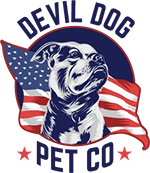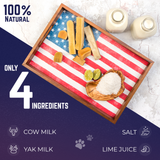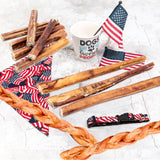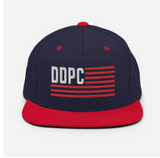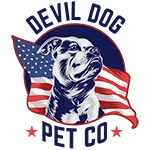Key Takeaways
- Poor dog nutrition can lead to behavioral issues, health problems, and broken owner-dog relationships.
- Thousands of dogs end up in shelters daily due to owners neglecting proper nutrition fundamentals.
- Effective dog nutrition is essential for ensuring a dog's lifelong health and success.
- The Extreme Dog Leadership movement emphasizes responsibility beyond feeding to include holistic care.
Table of Contents
- Why Dog Nutrition Matters: The Leadership Mandate
- The Science of Dog Nutrition, What Every Owner Must Know
- Demystifying Dog Food Labels: Your Field Manual for Feeding
- Decoding Commercial vs. Homemade vs. Raw Diets
- Essential Nutrients Deep Dive, What, Why, How Much?
- Special Considerations for Puppies, Seniors, and Special-Needs Dogs
- How to Calculate and Adjust Your Dog's Meals, No More Guesswork
- Treats, Chews, and Supplements, Responsible Rewarding
The Ultimate Guide to Dog Nutrition Information, Built for Leaders, Not Followers
Every day, thousands of dogs enter shelters because their owners failed at the fundamentals. Poor nutrition creates behavioral problems, health crises, and broken bonds that could have been prevented. As leaders in the Extreme Dog Leadership movement, we know that proper dog nutrition information isn't just about feeding, it's about taking full responsibility for your dog's lifelong health and success. For dogs that need both nutrition and enrichment, Himalayan Dog Chews are a natural, protein-rich option that supports dental health while satisfying chewing instincts.
This guide delivers the science-backed dog nutrition information you need to make confident feeding decisions. From decoding labels to calculating portions, we'll equip you with the knowledge to build a nutrition foundation that keeps your dog thriving and out of shelters. If you're looking for more practical tips and real-world advice, check out the devil dog blog for a wealth of dog care resources.
Why Dog Nutrition Matters: The Leadership Mandate
The Science of Dog Nutrition, What Every Owner Must Know

Dogs are omnivores, not wolves. Their digestive systems have evolved over 15,000 years to process both animal proteins and plant matter efficiently. They produce amylase to break down starches and have longer intestinal tracts than pure carnivores. Understanding this science prevents costly feeding mistakes.
"Complete and balanced" means a food meets AAFCO (Association of American Feed Control Officials) standards through feeding trials or nutrient profiles. For adult dogs, this requires minimum 18% protein and 5.5% fat on a dry matter basis. Puppies need 22.5% protein and 8.5% fat to support rapid growth.
Life stage matters because metabolic needs shift dramatically. Puppies require twice the calories per pound as adults. Senior dogs need easily digestible proteins as kidney function declines. Active working dogs may need 50% more calories than couch potatoes of the same weight.
Common myths persist despite evidence. "Grain-free" doesn't equal healthier, it may increase DCM (dilated cardiomyopathy) risk. "High meat content" can create protein imbalances without proper mineral ratios. The best dog nutrition information focuses on complete nutritional profiles, not marketing buzzwords.
Demystifying Dog Food Labels: Your Field Manual for Feeding
Reading labels correctly separates leaders from followers. Start with the nutritional adequacy statement, it must say "complete and balanced" and specify life stage. Without this, you're feeding an incomplete diet regardless of fancy ingredients.
Ingredients list by weight before processing. Chicken appears first, but once moisture is removed, chicken meal (concentrated protein) may provide more actual nutrition. Don't be fooled by "deboned chicken, sweet potatoes, peas", the vegetables combined might outweigh the meat.
The guaranteed analysis shows minimums and maximums, not exact amounts. A food showing 25% protein could contain 25% or 35%, you won't know which. Focus on whether minimums meet your dog's life stage requirements rather than assuming higher numbers equal better nutrition.
Label Red Flags to Avoid
- No AAFCO statement
- Vague terms like "meat meal" instead of "chicken meal"
- Multiple forms of the same ingredient to split weight
- By-products listed first (though by-products aren't inherently bad)
- Feeding directions that don't match your dog's needs
Label Reading Essentials
Top 5 Label Tricks: 1) Ingredient splitting (corn, corn meal, corn gluten listed separately), 2) "Natural" with no regulatory meaning, 3) "Premium" as marketing fluff, 4) Misleading protein percentages, 5) Missing AAFCO statement buried in fine print.
Feeding directions provide starting points, not gospel. A 50-pound active dog might need 30% more than the bag suggests, while a couch potato needs 20% less. Use directions as baselines, then adjust based on body condition and energy levels.
Decoding Commercial vs. Homemade vs. Raw Diets
Commercial foods offer convenience and nutritional completeness when you choose AAFCO-approved brands. Quality kibble provides consistent nutrition without guesswork, making it the smart choice for most owners. Premium brands undergo feeding trials and nutritional analysis that homemade diets rarely match. For more on the pros and cons of different chews, see are antlers for dogs a good idea for an in-depth look at natural chew options.
Homemade diets require serious commitment and expertise. Most well-intentioned owners create deficiencies, studies show 95% of homemade diets lack essential nutrients. Success demands working with veterinary nutritionists, precise measuring, and ongoing monitoring. The time investment often exceeds 10 hours weekly for proper meal prep and supplementation.
Raw diets carry significant safety risks. Bacterial contamination affects 80% of commercial raw foods, and nutritional imbalances are common without professional formulation. While some dogs thrive on properly managed raw diets, the expertise required makes this unsuitable for most owners.
| Diet Type | Nutrition Completeness | Safety Risk | Monthly Cost | Time Investment |
|---|---|---|---|---|
| Premium Commercial | AAFCO certified complete | Very low | $40-80 | 5 minutes daily |
| Homemade | Often deficient without expert help | Moderate | $60-120 | 10+ hours weekly |
| Raw | Variable, often imbalanced | High bacterial risk | $80-150 | 8+ hours weekly |
Essential Nutrients Deep Dive, What, Why, How Much?

Water
Water is the most critical nutrient, yet most overlooked. Dogs need 1 ounce per pound of body weight daily, a 40-pound dog requires 5 cups minimum. Dehydration causes kidney damage, poor temperature regulation, and digestive problems within hours.
Boost water intake: Add warm water to kibble, offer ice cubes as treats, or switch to wet food. Fresh water daily prevents bacterial growth and encourages drinking. Monitor intake, sudden increases or decreases signal health issues requiring veterinary attention.
Protein
Dogs require 10 essential amino acids they cannot produce internally. Animal proteins provide complete amino acid profiles, while plant proteins often lack methionine or lysine. Quality matters more than quantity, 25% protein from premium sources outperforms 30% from low-grade meals.
Check protein adequacy by monitoring muscle mass and coat quality. Visible ribs with good muscle coverage indicates proper protein utilization. Dull coats, muscle loss, or slow wound healing suggest protein deficiency despite adequate percentages on the label.
Fat
Fats provide concentrated energy and enable absorption of fat-soluble vitamins A, D, E, and K. Omega-3 fatty acids reduce inflammation and support brain function, while omega-6s maintain skin barrier function. The ideal ratio is 5:1 to 10:1 omega-6 to omega-3.
Natural fat sources: Rotate in sardines weekly or add flax oil (1/4 teaspoon per 10 pounds body weight). Excessive fat causes pancreatitis; insufficient fat creates dry skin and poor nutrient absorption. Monitor stool consistency, greasy stools indicate fat malabsorption.
Carbohydrates and Fiber
Dogs digest carbohydrates efficiently when properly cooked. Fiber supports gut health by feeding beneficial bacteria and regulating bowel movements. Soluble fiber (pumpkin, oats) slows digestion and helps weight management, while insoluble fiber (cellulose) adds bulk.
Optimal fiber ranges from 2-4% for most adult dogs. Higher fiber helps overweight dogs feel full; lower fiber suits high-energy working dogs. Quality carb sources include sweet potatoes, brown rice, and oatmeal, all provide sustained energy without blood sugar spikes.
Vitamins & Minerals
More isn't better with vitamins and minerals. Excess vitamin A causes bone deformities; too much calcium disrupts phosphorus absorption. Fat-soluble vitamins (A, D, E, K) accumulate in tissues and can reach toxic levels, unlike water-soluble B vitamins and vitamin C.
Balanced commercial foods provide adequate micronutrients. Supplementation becomes necessary only with homemade diets or specific health conditions. Always consult veterinarians before adding supplements, even "natural" vitamins can interact with medications or create imbalances. For more information on safe and unsafe foods, see which human foods are toxic to dogs for a detailed guide.
Special Considerations for Puppies, Seniors, and Special-Needs Dogs
Life stage nutrition demands precision, not guesswork. Puppies require double the protein and calories per pound compared to adults, while seniors need easily digestible nutrients to support declining organ function. Getting this wrong affects everything from bone development to cognitive health.
Puppies
Rapid growth demands frequent feeding, four meals daily until 16 weeks, then three until six months. Puppy formulas provide 22-32% protein versus 18% for adults, plus higher fat for brain development. Feed large breed puppies controlled-calcium diets to prevent joint problems from growing too fast.
Sample feeding schedule: 8-12 weeks (4 meals), 3-6 months (3 meals), 6+ months (2 meals). Monitor growth weekly, puppies should gain 2-4 pounds per week depending on adult size. Ribs should be barely visible with light muscle coverage.
Seniors
Metabolic changes after age seven require diet adjustments. Senior dogs absorb nutrients less efficiently and often develop kidney or heart conditions requiring modified protein or sodium. Switch to senior formulas when activity decreases noticeably or weight management becomes challenging.
Enhance palatability with warm water, bone broth, or wet food toppers. Senior dogs often prefer smaller, more frequent meals as digestion slows. Monitor body condition monthly, muscle loss indicates inadequate protein despite normal weight. For authoritative guidance on senior dog nutrition, refer to dog nutrition tips from the ASPCA.
Dogs with Health Conditions
Obesity affects 56% of dogs and requires calorie restriction plus increased fiber. Prescription weight management foods provide 20-25% fewer calories while maintaining protein levels. Kidney disease demands phosphorus restriction and increased omega-3 fatty acids to reduce inflammation.
Food allergies require elimination diets using novel proteins or hydrolyzed formulas. Common allergens include beef, dairy, chicken, and wheat. True elimination trials last 8-12 weeks with zero treats except the prescribed diet.
| Life Stage/Condition | Calories per lb | Protein Min % | Fat Min % | Feeding Frequency |
|---|---|---|---|---|
| Puppy (8-16 weeks) | 60-80 | 22-32% | 8-15% | 4 meals daily |
| Adult (1-7 years) | 25-35 | 18-25% | 5-8% | 2 meals daily |
| Senior (7+ years) | 20-30 | 18-22% | 5-8% | 2-3 small meals |
| Overweight | 15-20 | 25-30% | 6-10% | 3-4 small meals |
How to Calculate and Adjust Your Dog's Meals, No More Guesswork
Accurate feeding starts with calculating your dog's Resting Energy Requirement, then adjusting for activity level, age, and body condition. A 40-pound (18 kg) moderately active dog needs approximately 1,000 calories daily, but individual variation can exceed 30% based on metabolism and environment. For a comprehensive overview of canine nutritional needs, see Your Dog's Nutritional Needs from the FDA.
Sample calculation: 40-pound dog = 18 kg. RER = 70 × (18)^0.75 = 662 calories. Multiply by 1.6 for typical activity = 1,059 calories daily. Divide by food's calorie density to determine cup measurements.
Monitor body condition weekly using the rib test, you should feel ribs with light pressure but not see them clearly. Waist tuck should be visible from the side, hourglass shape from above. Adjust portions by 10-15% weekly until optimal condition is achieved.
Weight changes lag behind calorie adjustments by 2-3 weeks. Track trends, not daily fluctuations. Rapid weight loss exceeding 2% weekly indicates excessive restriction; no change after four weeks requires further calorie reduction or veterinary consultation.
Treats, Chews, and Supplements, Responsible Rewarding
 yak cheese, and autumn leaves on picnic table.">
yak cheese, and autumn leaves on picnic table.">
Strategic treating enhances nutrition rather than sabotaging it. High-quality chews like yak cheese, elk antlers, and bully sticks provide dental benefits and mental stimulation while contributing meaningful nutrients. The key is respecting the 10% rule, treats and chews should never exceed 10% of daily calories. For another practical tip, read i can trim my dogs nails in three minutes can you to learn about efficient grooming routines.
Devil Dog Pet Co.'s natural chews offer superior nutritional profiles compared to processed treats. Himalayan yak chews provide 85% protein with essential minerals, while elk antlers supply calcium and phosphorus for bone health. These nutrient-dense options satisfy chewing instincts without empty calories. If your dog loves a long-lasting reward, try a Large - Himalayan Dog Chew for a wholesome treat that supports both nutrition and dental health.
Calculate treat calories precisely. A medium yak chew contains approximately 300 calories, perfect for a 60-pound dog but excessive for a 20-pound terrier. Split larger chews into multiple sessions and always supervise to prevent overconsumption. For more on safe, responsible rewarding, see our FAQ below.
Frequently Asked Questions
Why is understanding a dog's life stage important when determining their nutritional needs?
A dog's nutritional requirements change significantly across life stages, puppies need higher protein and fat to support growth, while seniors require adjusted nutrients to maintain health and mobility. Feeding according to life stage ensures your dog gets the right balance to thrive, avoid deficiencies, and prevent excess weight or health issues.
How can I accurately read and interpret dog food labels to ensure I'm feeding a complete and balanced diet?
Look for the AAFCO statement indicating the food meets "complete and balanced" standards for your dog's life stage, backed by feeding trials or nutrient profiles. Check guaranteed analysis for minimum protein and fat levels, and review ingredient lists for quality sources, this helps you confirm the food provides all essential nutrients your dog needs.
What are the risks associated with popular dog food trends like grain-free diets or high meat content?
Grain-free diets can sometimes lack essential nutrients or lead to imbalanced minerals, potentially affecting heart health in some dogs. High meat content isn't always better, without proper balance, it can cause digestive upset or nutrient gaps. Extreme trends often overlook the science of balanced nutrition, so vet consultation and evidence-based choices are critical.
How does proper dog nutrition influence behavior and the overall owner-dog relationship?
Good nutrition supports brain function, energy levels, and mood stability, reducing behavioral issues like anxiety or aggression. When your dog feels physically well, training and bonding become smoother, strengthening trust and loyalty, the core of Extreme Dog Leadership and a lifelong partnership.
